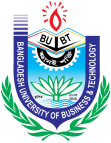

There are two interactive and correlated outcomes associated with progress of a program under OBE system. The three outcomes along with their relationship are described below.
Course Outcomes (COs)
The Course Outcomes (CO) are the knowledge and skills obtained by the students over completing each of the courses taken for the program. Every course should have some (3 or 4 etc.) appropriate course outcomes that must target to the Program Outcomes (PO) of the program B.Sc. in EEE enrolled here. The COs for each core course offered by the program must be stated which are used to demonstrate attainment of Program Outcomes (POs) according to the following Table.
The COs of all other courses offered by the program along with the corresponding domain/level of learning taxonomy, delivery methods and activities and assessment tools, should also be demonstrated.
CO No. | CO Statement | Corresponding PO No. | Domain / Level of Learning Taxonomy | Delivery Methods and Activities | Assessment Tools |
CO1 |
|
|
|
|
|
CO2 |
|
|
|
|
|
CO3 |
|
|
|
|
|
— |
|
|
|
|
|
Program Outcomes (POs)
Program Outcomes (POs) or Graduate Attributes are narrower statements that describe what students are expected to know and be able to do by the time of graduation. These statements relate to the knowledge, skills and attitudes acquired by students while progressing through the program. The program must demonstrate that by the time of graduation, students have achieved an acceptable minimum level of certain knowledge, skills and behavioral traits. The B.Sc. in EEE Program at BUBT, however, develops students to acquire the following graduate attributes as Program Outcomes (POs) as specifically required by The Board of Accreditation for Engineering and Technical Education (BAETE), Bangladesh.
(PO-1) Engineering knowledge: Apply knowledge of mathematics, natural science, engineering fundamentals and an engineering specialization as specified in K1 to K4 respectively to the solution of complex engineering problems.
(PO-2) Problem analysis: Identify, formulate, research literature and analyze complex engineering problems reaching substantiated conclusions using first principles of mathematics, natural sciences and engineering sciences. (K1 to K4)
(PO-3) Design/development of solutions: Design solutions for complex engineering problems and design systems, components or processes that meet specified needs with appropriate consideration for public health and safety, cultural, societal, and environmental considerations. (K5)
(PO-4) Investigation: Conduct investigations of complex problems using research-based knowledge (K8) and research methods including design of experiments, analysis and interpretation of data, and synthesis of information to provide valid conclusions.
(PO-5) Modern tool usage: Create, select and apply appropriate techniques, resources, and modern engineering and IT tools, including prediction and modeling, to complex engineering problems, with an understanding of the limitations. (K6)
(PO-6) The engineer and society: Apply reasoning informed by contextual knowledge to assess societal, health, safety, legal and cultural issues and the consequent responsibilities relevant to professional engineering practice and solutions to complex engineering problems. (K7)
(PO-7) Environment and sustainability: Understand and evaluate the sustainability and impact of professional engineering work in the solution of complex engineering problems in societal and environmental contexts. (K7)
(PO-8) Ethics: Apply ethical principles and commit to professional ethics and responsibilities and norms of engineering practice. (K7)
(PO-9) Individual work and teamwork: Function effectively as an individual, and as a member or leader in diverse teams and in multi-disciplinary settings.
(PO-10) Communication: Communicate effectively on complex engineering activities with the engineering community and with society at large, such as being able to comprehend and write effective reports and design documentation, make effective presentations, and give and receive clear instructions.
(PO-10) Project management and finance: Demonstrate knowledge and understanding of engineering management principles and economic decision-making and apply these to one’s own work, as a member and leader in a team, to manage projects and in multidisciplinary environments.
(PO-12) Life-long learning: Recognize the need for, and have the preparation and ability to engage in independent and life-long learning in the broadest context of technological change.
In addition to incorporating the above-listed POs (graduate attributes), the Dept. of EEE, BUBT also includes additional outcomes in B.Sc. in EEE program. The B.Sc. in EEE program aims to attain the abovementioned POs as well as ensures the curriculum encompasses all the attributes of the Knowledge Profile (K1 – K8) as included in the PO statements. Besides, the ranges of Complex Engineering Problem Solving (P1 – P7) and Complex Engineering Activities (A1 – A5) as given in BAETE manual are also addressed in the program.
Program Educational Objectives (PEO)
The Bachelor of Science in Electrical and Electronic Engineering (B.Sc. in EEE) program of BUBT has been designed, equipped and operated to produce successful graduates to be professional and competent in diverse area of interdisciplinary engineering sectors. The Program Educational Objectives (PEOs) of B.Sc. in EEE program, however, cover the following potential accomplishments as expected from the graduates.
PEO 1: The graduates will be successful engineers to deal with state-of the-art technology in diverse fields of electrical and electronic engineering with their innovative knowledge and professional skills.
PEO 2: The graduates will be competent and proficient in their career with professional ethics, responsibilities and leadership.
PEO 3: The graduates will promote research and development in multidisciplinary fields with their expertise, critical thinking and life-long learning.
PEO 4: The graduates will efficiently contribute for the corporate sectors with their technical, communication and project management skills
3.7. CO – PO & PO – PEO Mapping
(1) CO-PO Mapping: Relation of Course Outcomes (CO) with relevant Program Outcomes (PO) is established in terms of CO-PO mapping as follows.

